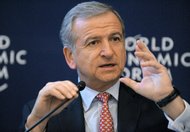HONG KONG — The Australian central bank on Tuesday cut rates for the eighth time in less than two years in a bid to improve sluggish growth as a boom in mining investment over the past decade comes to an end.
The Reserve Bank of Australia lowered its benchmark cash rate by a quarter of a percentage point to a record low of 2.5 percent, bringing the total cuts since November 2011 to 2.25 percentage points.
Despite cooling growth in China, which is the main market for Australia’s mineral riches, resource exports are continuing to grow, and are expected to continue to do so as projects that are now in the pipeline begin operation.
But investments in the resource sector, which helped Australia weather the global turmoil of recent years better than other developed economies, are now petering out, leaving the country struggling to rebalance with other areas, like manufacturing and tourism.
A steady stream of interest rate cuts since late 2011 has helped cushion the economy so far, and data released Tuesday showed house prices in major Australian cities rose 2.4 percent in the second quarter — more than analysts had expected.
A slide in the Australian dollar could also help provide a lift to tourism. The Australian currency has fallen about 15 percent against the U.S. dollar since mid-April.
On the other hand, it remains well above where it has been for much of the past two decades. However, unemployment has edged up, and policy makers and analysts have warned that economic rebalancing will be challenging and take time.
In a statement accompanying the rate decision Tuesday, the central bank governor, Glenn Stevens, hinted at the divergent trends, saying that although there had recently been “signs of increased demand for finance by households,” the pace of borrowing had remained “relatively subdued.”
The latest interest rate cut had been widely expected after comments from Mr. Stevens in a speech last week about the end of the mining boom.
Resource sector investment, he said, had risen from an average of about 2 percent of gross domestic product to peak around 8 percent on the back of soaring international demand for resources.
“That big rise is now over, and a fall is in prospect, with uncertain timing. It could be quite a big fall in due course,” Mr. Stevens said.
Similarly, the government on Aug. 2 lowered its growth forecasts for the current financial year, which runs through June 2014, saying it expected expansion of 2.5 percent, rather than the 2.75 percent it had projected.
The “abnormal period of heavy reliance on one part of the economy” will come to an end, and “managing the transition back to more normal, broader based growth will be a key economic challenge over the next few years,” the government said in its assessment.
“If we don’t see some improvement in the leading indicators of the economy, such as job ads and business conditions,” or if the Australian dollar strengthens again, economists at UBS in Sydney wrote in a research note, the central bank “will likely have some further work to do either late this year or early 2014.”

Article source: http://www.nytimes.com/2013/08/07/business/global/australian-central-bank-cuts-key-rate-to-record-low.html?partner=rss&emc=rss

